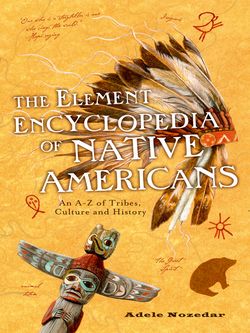Читать книгу The Element Encyclopedia of Native Americans: An A to Z of Tribes, Culture, and History - Adele Nozedar - Страница 130
CORNSTALK
Оглавление1720(?)–1777
A Shawnee leader, Cornstalk’s Native name was Hokoleskwa, which translates, roughly, as “stalk of corn.” Born near Pennsylvania, he moved to Ohio along with other members of his tribe, forced from the Shawnee’s traditional lands by the incursion of the white settlers. It is indeterminate as to whether or not he fought in the French and Indian War, but what is certain is that he lobbied for peace. Cornstalk did, however, fight in Lord Dunmore’s War to try to block the invasion of Virginian settlers into Shawnee land in Ohio. Despite the fact that the Indians were beaten on this occasion by the settlers, his skills as a warrior and commander attracted the attention and respect of the white people. His skills as an orator, too, did not go unnoticed.
During the Revolutionary War a position of neutrality was favored by Cornstalk; however, the overriding feeling among the Shawnee was that the British should be supported since then there would be a chance that the incursion of settlers would be stopped. The tribe were split into those that supported Cornstalk, and those that favored fighting on behalf of the British, led by Chief Blue Jacket.
In 1777 Cornstalk was visiting Fort Randolph in West Virginia. However, despite the diplomacy of his visit, Cornstalk fell foul of the commander there, who had decided to capture any Shawnee and hold them hostage. Cornstalk, his son, and two other Shawnee were killed as a result of an unrelated incident when an American soldier was killed by an unknown Indian.
With the death of Cornstalk the Americans were alarmed; with him had died what they thought was any chance of the Shawnee remaining neutral. He was buried where he died, at Fort Randolph, although in 1840 his remains were relocated to the Mason County Courthouse in Washington state. When the courthouse was demolished in 1954, Cornstalk’s remains were moved once again, and he was interred at Point Pleasant, Virginia.
